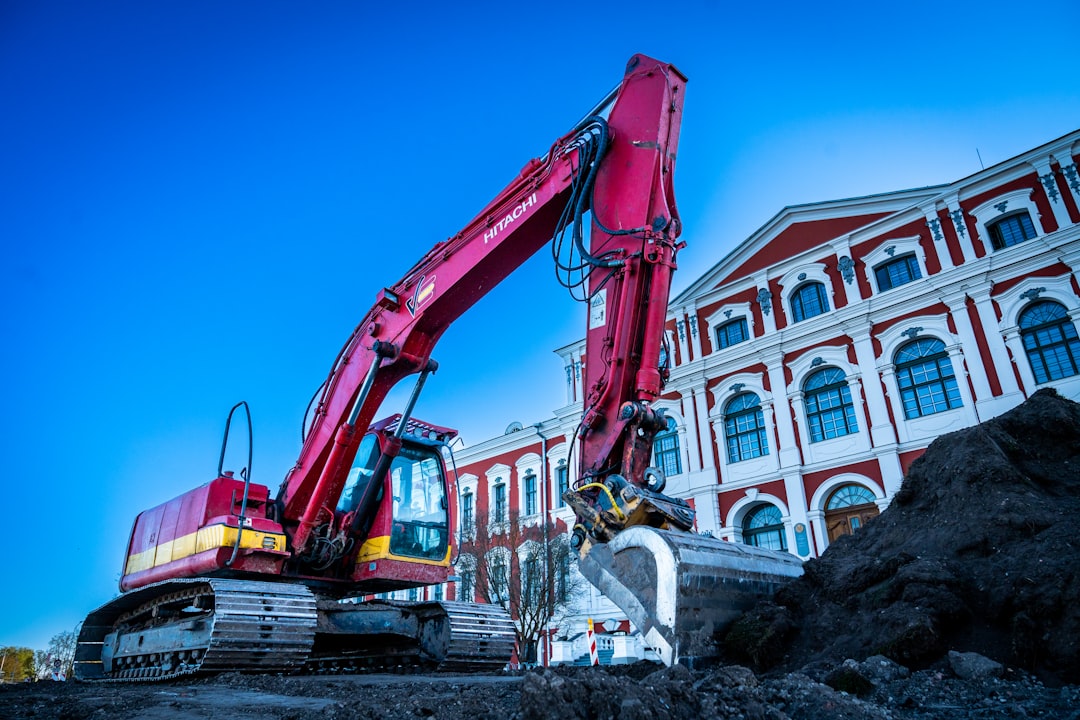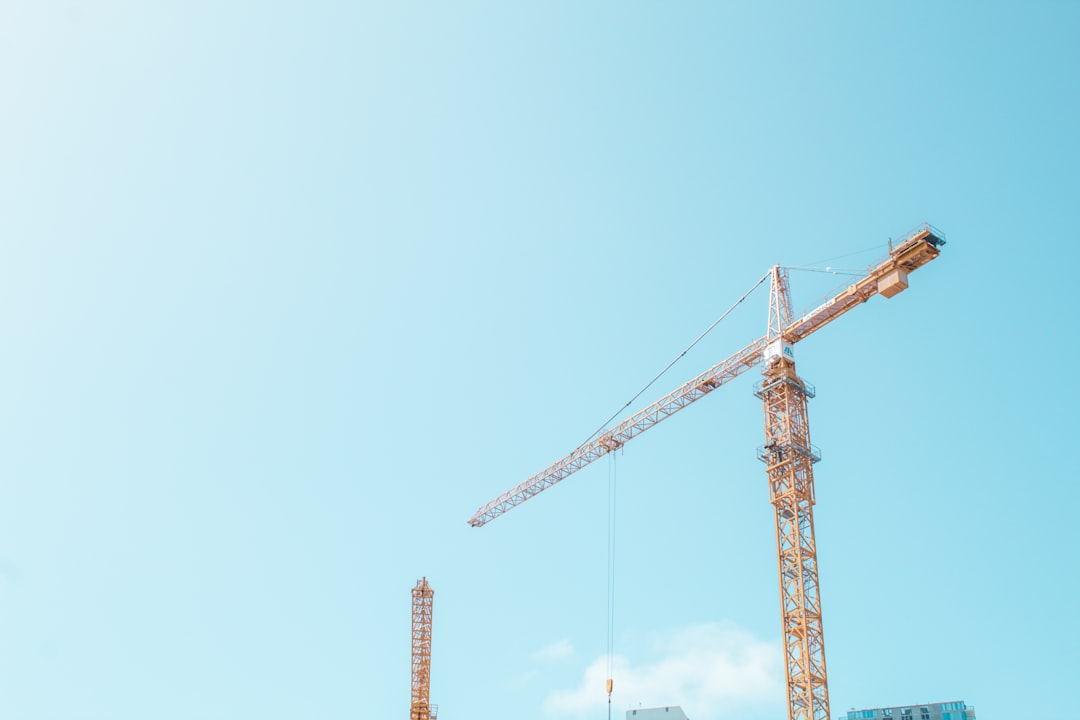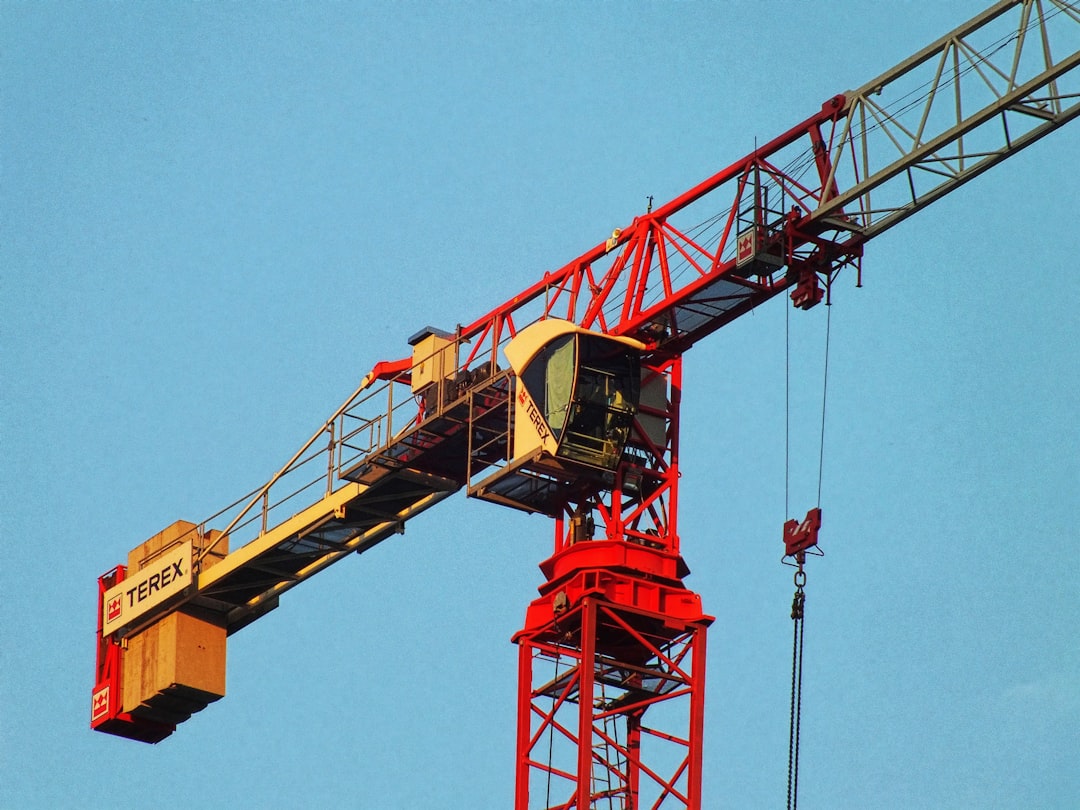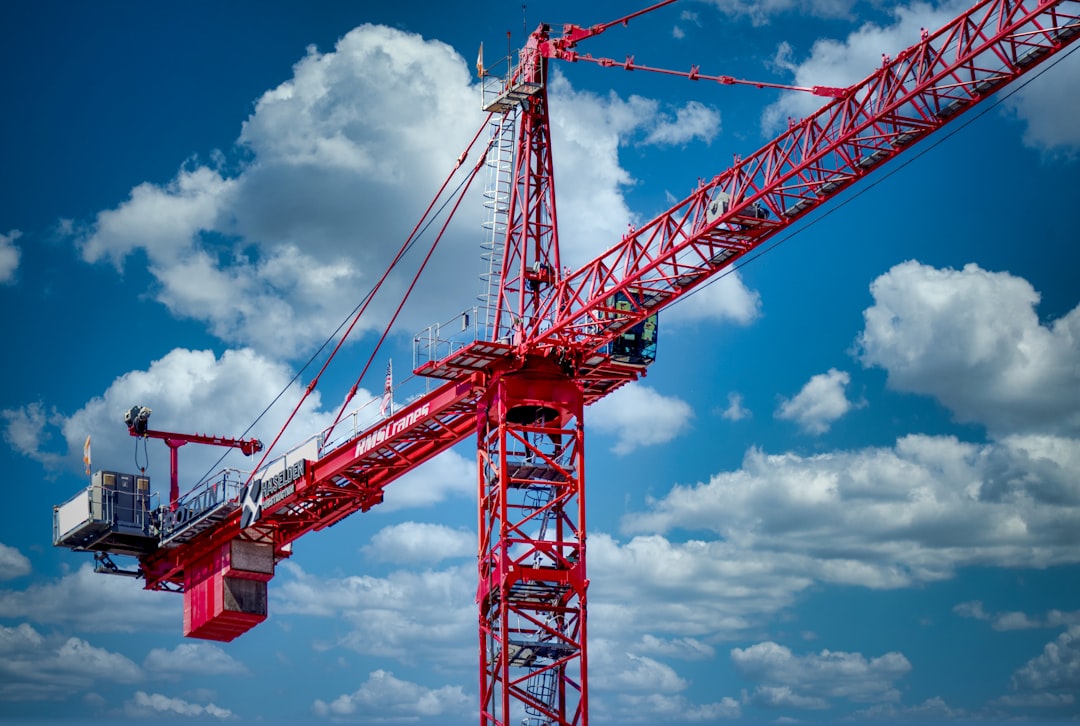

Engage prospects with a scan and streamline customer engagement with FREE QR code marketing tools by Sona – no strings attached!
Create a Free QR CodeFree consultation

No commitment

Engage prospects with a scan and streamline customer engagement with FREE QR code marketing tools by Sona – no strings attached!
Create a Free QR CodeFree consultation

No commitment
QR codes have evolved from a novelty to a strategic powerhouse in bridging offline engagement with online action. For contractor equipment rental companies, QR codes represent a seamless, frictionless, and highly effective way to streamline inventory management, enable customer self-service, and connect every physical touchpoint with a data-driven online experience.
Contractor equipment rental companies face operational headaches: manual asset tracking that allows high-value prospects to slip through unnoticed, outdated paper-based workflows that slow execution, and significant blind spots around which customer interactions actually drive results. These limitations often mean missed revenue, disengaged customers, and mounting administrative costs. Technology-driven QR solutions have emerged to address these specific pain points, helping companies surface previously invisible opportunities and streamline every customer and asset interaction.
This guide explores how contractor equipment rental companies can leverage QR codes to optimize asset management, enhance customer experience, and drive measurable business outcomes. Learn how QR-driven workflows replace legacy processes and see how proactively closing tracking and engagement gaps through QR strategies can position your business for growth.

For many contractor equipment rental companies, legacy manual tracking can lead to missed high-value opportunities when equipment usage or inquiries are not captured in the system. QR codes stand out as an efficient way to bridge this gap, delivering the transparency, accuracy, and automation that old workflows lack. They convert previously invisible field actions into structured data, which simplifies asset control and gives customers a faster path to what they need.
Replacing analog processes is central to the value proposition. Printed brochures become mobile landing pages with live pricing and availability. Paper forms turn into pre-filled mobile check-ins and returns. Phone calls that go to voicemail become instant service tickets with photos attached. The result is a cleaner handoff between yard teams, dispatch, sales, and accounting, with fewer errors and less administrative drag.
Modern platforms like Sona QR make this end-to-end approach practical. You can generate dynamic codes, manage destinations, capture scan analytics, sync with your CRM, and iterate quickly. The goal is to capture every critical touchpoint, turning missed or anonymous activity into actionable, measurable outcomes that strengthen both operations and revenue.

Contractor equipment rental companies have long struggled with gaps in visibility, especially when key assets are handled, inspected, or even rented without clear digital records. Without effective tracking, valuable prospects remain unknown and customer intent can go unnoticed, which makes it difficult to personalize follow-up or maximize asset utilization. QR codes offer an immediate, practical way to address these challenges for construction businesses, by collapsing the distance between a physical object and a digital action.
They also offer a consistent, intuitive interface for busy field users. A single scan can handle what used to take multiple steps: finding a manual, calling to report a fault, or locating a rate sheet. This simplicity is vital in jobsite conditions where time is scarce and attention is divided.
QR codes directly address the pain points of lost leads and invisible asset movements, turning these blind spots into sources of growth. When paired with a platform like Sona QR, they also provide the analytics backbone that unifies operations, marketing, and sales around shared, real-time insights.
Not all QR codes are created equal. Rental businesses need formats that map to the jobs users need to complete: view equipment specs, book or extend a rental, request service, or contact a rep. Selecting the right format improves scan-to-action conversion and keeps workflows simple for field users.
Dynamic codes add flexibility that static stickers cannot. With a dynamic code, you can evolve destinations over time, A/B test landing pages, or switch a link from a product sheet to a service notice during a safety recall, all without reprinting labels. This agility is especially important when equipment moves across branches or when compliance requirements change.
With Sona QR, you can generate any of these formats, manage them centrally, and switch among them as your workflow evolves. For most rental scenarios, dynamic web links and SMS triggers deliver the best mix of immediacy, trackability, and operational fit.

Growth is often hidden in plain sight. The challenge is that many high-intent actions happen on the yard, on the road, or on the jobsite with no digital record. QR codes make those actions visible and measurable, which unlocks opportunities to improve conversion, utilization, and lifetime value.
Focus your deployment where attention is already high. A well-placed code near a control panel or on a dispatch sheet captures intent with minimal friction. Over time, scan analytics highlight the best-performing placements and assets, which lets you refine both your operations and your marketing.
Proactive QR deployment turns formerly unknown actions into high-resolution insights and repeatable playbooks. The payoff grows with scale, as accumulating data reveals patterns in demand, seasonality, and customer behavior that you can act on.

Contractor equipment rental firms often struggle with incomplete customer records, inefficient manual reporting, and friction during high-value touchpoints like equipment handoff or demo bookings. QR-driven workflows mitigate these challenges by connecting physical equipment to digital processes that are fast, consistent, and measurable.
Below are core use cases that align with everyday interactions across the rental lifecycle. Each converts a manual step into a scan-to-action moment that saves time and improves data quality.
By linking every physical interaction to a digital process, companies foster faster turns, fewer errors, improved compliance, and better customer retention. These use cases also produce rich behavioral data that supports smarter inventory planning and targeted marketing.
Each QR code scan is a signal of intent and context. It tells you what someone was looking at, where they were, and often what they were trying to accomplish. By deploying multiple codes across touchpoints, you can segment your audience automatically and use that data to fuel precise retargeting and follow-up campaigns.
The key is to tag each code for journey stage, use case, and location. With Sona QR, every scan can be synced to your CRM, creating behavior-based audiences that trigger workflows in email, SMS, and ad platforms. This transforms anonymous yard traffic and walk-in inquiries into structured lists that sales and marketing can work efficiently.
For contractor equipment rental companies, two especially valuable distinctions are recurring account customers versus net-new prospects, and fleet operators versus purchasers. The former informs pricing and loyalty offers, while the latter shapes messaging and the next best action.
Disconnected campaigns and incomplete journeys often waste spend and cause missed follow-ups. QR codes act as the connective tissue that links physical placements to digital experiences while capturing performance data that was previously unavailable for offline attribution. When every print asset and field interaction drives a trackable scan, you can align marketing, sales, and operations around a coherent funnel.
Begin by listing your primary offline channels: catalogs, rack cards, yard banners, truck signage, delivery paperwork, and event materials. For each, define the desired action and a clear call to action that promises concrete value, such as scan to see live availability or scan for a weekend discount.
Centralizing all QR interactions within a unified dashboard like Sona QR brings clarity to the customer journey. You can monitor performance, test messages and placements, and sync scan data with your CRM, which enables faster iteration and higher return on your marketing inputs.
Missed touchpoints and breakdowns in campaign execution often stem from fragmented deployment and lack of clear measurement. A disciplined QR rollout can resolve these issues by aligning use cases, placements, and metrics from the outset. Start small, prove the value on a few assets or branches, and expand once you have baseline data.
Use the following steps as a repeatable framework that operations and marketing can share. Consistency across branches and teams is essential, since uneven usage erodes both user trust and data quality.
Clarify what success looks like. Common goals include enabling contactless check-in and check-out to reduce counter time and shrink errors, capturing self-serve quotes from walk-in traffic, or accelerating service ticket submissions to cut downtime.
Define the target audience and the key action you want them to take. For example, you may aim to increase after-hours reservations by 25 percent during peak season by placing QR codes on the front gate and the website’s contact page that route to real-time availability.
Choose a dynamic code when you want trackability and future flexibility. Dynamic codes allow you to edit destinations, run A/B tests, and attach UTM parameters, which is essential for optimization. Static codes are acceptable for permanent resources like a general operator manual PDF, although even these often benefit from dynamic control.
Map formats to use cases. Web links for reservations and live rates, SMS or email triggers for maintenance requests, vCards for sales rep contact, and PDFs for safety and compliance. Sona QR supports all of these formats and makes it simple to manage them at scale.
Make codes easy to spot and scan. Add a branded frame, a short, benefit-focused CTA, and a high-contrast design that works on metal, plastic, and paint. Use protective coatings and position codes away from high-wear or heat zones.
Test scans under real conditions with multiple devices, angles, and lighting. Check glare, dust, and vibration tolerance. Validate that the landing page loads quickly on cellular networks and that the form or action works with limited typing. Iterate the design until scans convert reliably.
Roll out codes on assets, yard signage, dispatch forms, delivery paperwork, invoices, and print collateral. Prioritize placements that align with your growth plan, such as jobsite banners for awareness or counter signage for conversion. Ensure consistency in messaging, CTA language, and expectations across branches.
Document the deployment in a shared inventory. Assign owners for maintenance, such as replacing worn stickers and updating destinations. Train staff to explain the benefit in a sentence and to encourage scans at key moments in the customer journey.
Use Sona QR to track scans by time, location, device type, and asset. Monitor conversion behavior and drop-off points. Compare performance across placements and CTAs, and use the insights to refine your approach. A/B test landing page copy and layout, test variations in CTA phrasing like scan to reserve now versus check live availability, and reallocate placements based on scan density.
Close the loop by feeding scan data into your CRM. Trigger alerts for high-intent actions, such as multiple scans of a pricing page within a short window, and measure downstream outcomes like quotes generated, rentals booked, and invoices paid.
With the right digital tools and a structured plan, this checklist equips companies to turn every scan into a measurable, high-impact action. Run quarterly reviews to retire underperforming placements and to expand successful patterns to new branches or product lines.
Traditional tracking tools often leave rental businesses in the dark about which offline interactions actually fuel conversions. A flyer may disappear from a counter, a brochure may ride in a glove box for months, and a rate card may be photocopied and passed around with no trail. QR-driven analytics solve this by converting anonymous touchpoints into trackable events that can be tied to pipeline and revenue.
Measurement should not stop at the scan. Your analytics strategy must connect the scan to the action taken on the landing destination and ultimately to a financial outcome. This often requires both a QR management platform and an attribution tool that integrates with your CRM and billing systems.
With Sona QR and Sona.com, you can track every scan, measure engagement by channel and context, respond in real time, sync with CRM records, and attribute revenue back to the physical moments that drove it. This turns QR from a convenience feature into a core component of your performance and operations strategy.
Unlocking full value from QR codes means planning for adoption, measurement, and continuous improvement. The most effective deployments are visible, useful, and integrated with your systems, and they empower staff to reinforce the behavior at the right moments.
Use the following tips to increase scan rates, improve conversion, and strengthen your data.
These practices compound over time. As you build a history of scan and conversion data, you can refine messaging, optimize inventory positioning, and align marketing spend with channels that drive measurable outcomes.

Contractor equipment rental businesses are using QR code solutions in inventive ways to address persistent operational and marketing pain points. The most successful examples share a few traits: they promise immediate value, they are easy to find and use, and they are tied to an automated workflow that saves time for both customers and staff.
Consider these patterns as starting points, then tailor them to your equipment mix, branch layout, and customer behavior.
Even simple pilots can be powerful. For example, a mid-sized yard placed dynamic QR codes on their five highest-demand assets with a single CTA: scan to see availability and rates. Within eight weeks they learned that Saturday morning scans formed a predictable surge of near-term bookings, which led them to staff accordingly and to push a weekend promotion during those hours. The result was higher throughput and a better customer experience without adding overhead.
Expertise is often the difference between a QR program that becomes indispensable and one that fades after the first print run. Focus on durability, clarity, and integration from day one. Test under real conditions, solicit staff feedback, and prioritize use cases with both operational and revenue impact.
Below are best practices to emulate and pitfalls to avoid. Use them as a checklist during planning and quarterly reviews.
Best Practices:
Common Pitfalls:
QR codes are much more than a shortcut. When thoughtfully implemented, they become an essential bridge connecting physical inventory, digital workflows, and the real business outcomes contractor equipment rental companies depend on. By making every asset, print touchpoint, and customer journey stage measurable and actionable, these solutions convert previously uncontrolled interactions into a source of strategic advantage.
With streamlined operations, higher data visibility, and truly connected customer experiences at each scan, contractor equipment rental companies position themselves to capture more demand, provide frictionless service, and outpace competitors, delivering on both immediate efficiency and long-term growth. If you are ready to get started, generate your first dynamic codes with Sona QR, connect them to mobile-optimized destinations, and watch your field activity become the data and results your teams have been missing. Start creating QR codes for free.
The best contractor equipment rental companies don’t just provide tools—they provide seamless access and exceptional service. QR codes empower these companies to streamline equipment checkouts, track usage in real time, and enhance customer experiences with instant, contactless interactions. Instead of relying on manual processes, imagine knowing exactly when and how each piece of equipment is accessed, improving asset management and customer satisfaction simultaneously.
Sona QR makes it effortless to create dynamic, trackable QR codes that can be updated instantly without reprinting. This means you can connect every scan to actionable insights, optimize equipment utilization, and accelerate customer acquisition by offering a smooth, tech-forward rental experience. Start for free with Sona QR today and turn every scan into a step toward more efficient operations and loyal customers.
QR codes streamline equipment rental operations by automating asset tracking, reducing paperwork, enabling faster check-ins and check-outs, and connecting physical assets to digital workflows that enhance accuracy and reduce administrative costs.
Using QR codes for equipment tracking provides real-time visibility into asset usage, service history, and customer interactions, reduces lost or unbilled equipment, improves compliance with inspection processes, and enables data-driven inventory and maintenance decisions.
QR codes enhance customer experience by offering one-scan access to live pricing, availability, manuals, and self-service booking forms, which reduces wait times, simplifies processes, and allows customers to request service or quotes without needing to contact staff directly.
Best practices include assigning unique dynamic QR codes to each asset, placing codes in durable, visible locations suited for rugged conditions, integrating scan data with rental management and CRM systems, training staff to promote QR use, monitoring analytics for optimization, and using specific, benefit-focused calls to action.
QR codes offer greater flexibility than traditional barcodes by linking to dynamic digital content such as manuals, booking forms, and service tickets, enabling real-time updates without reprinting, and providing measurable engagement data that supports operational and marketing insights.
Use Sona QR's trackable codes to improve customer acquisition and engagement today.
Create Your FREE Trackable QR Code in SecondsJoin results-focused teams combining Sona Platform automation with advanced Google Ads strategies to scale lead generation

Connect your existing CRM

Free Account Enrichment

No setup fees
No commitment required

Free consultation

Get a custom Google Ads roadmap for your business






Launch campaigns that generate qualified leads in 30 days or less.
